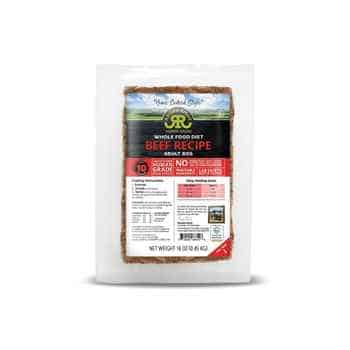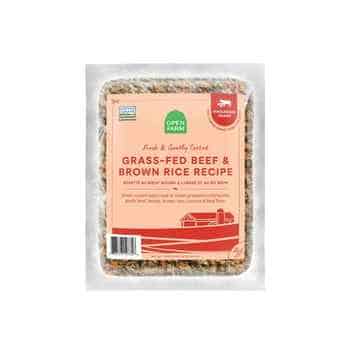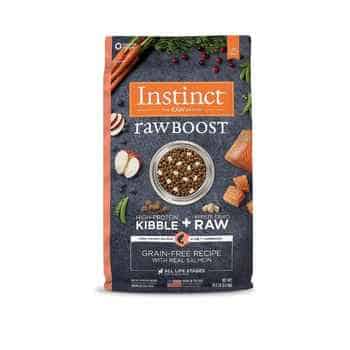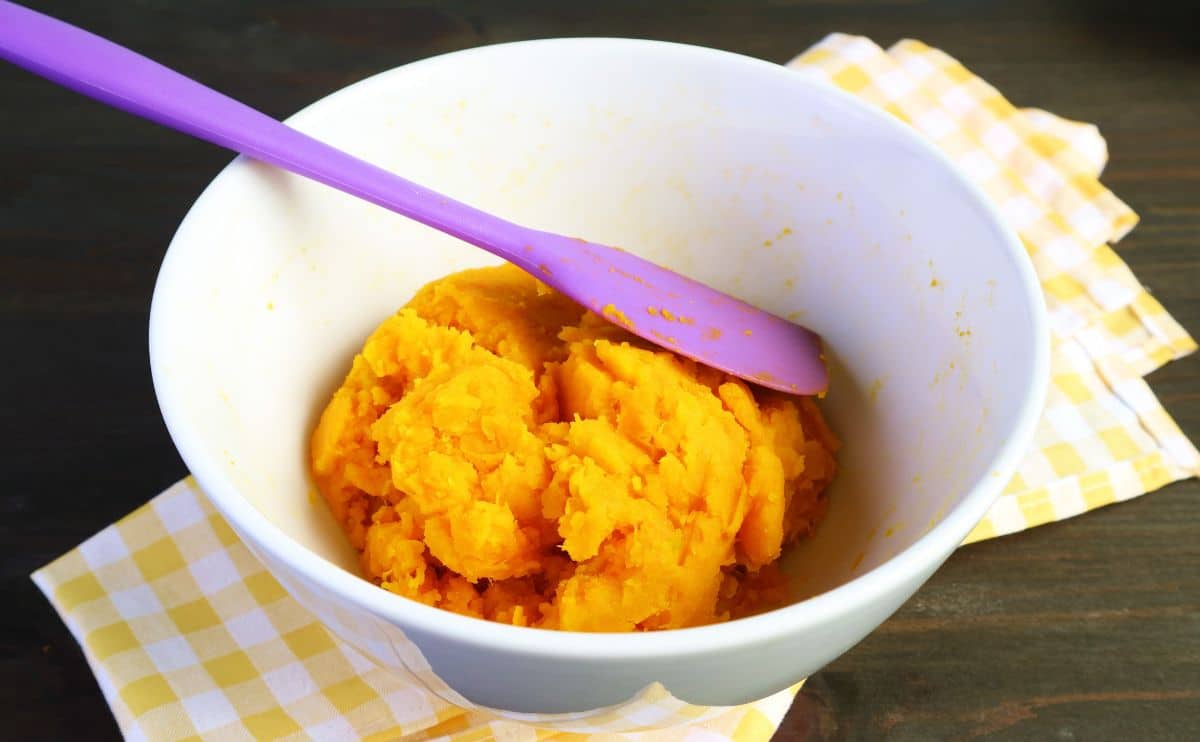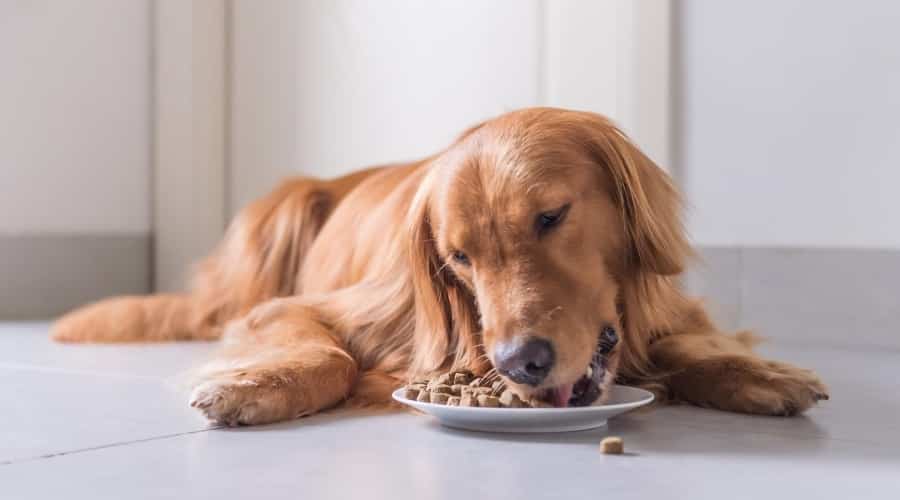Best Dog Food For Weight Gain: High Fat, Protein, Puppy, Muscle Growth & More
When you purchase through links on our site, we may earn a commission. Here’s how it works.
Keeping your dog at a healthy weight is a priority for all canine owners. A big concern is ensuring that dogs do not gain too much weight and become overweight, which leads to obesity, diabetes, and heart disease. On the other hand, some dogs are underweight and need to gain some pounds. Simply eating more dog food or calories will not solve the problem for them. I’ve researched hundreds of dog food brands and formulas and have determined Raised Right, CRAVE, Bully Max, and The Farmer’s Dog to be among the best dog foods for weight gain.
Table of Contents
| High Fat | High Protein | Weight Gain | Puppy |
|---|---|---|---|
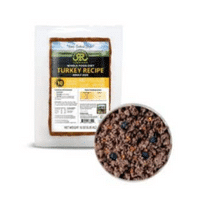 |  | 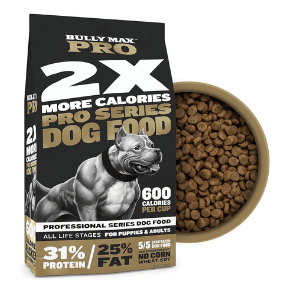 | 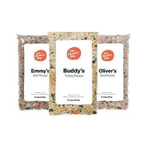 |
| Raised Right | CRAVE | Bully Max | The Farmer’s Dog |
| Visit Website | View on Amazon | View on Amazon | Visit Website |
| Read Review | Read Review | Read Review | Read Review |
Why Would A Dog Need To Gain Weight?
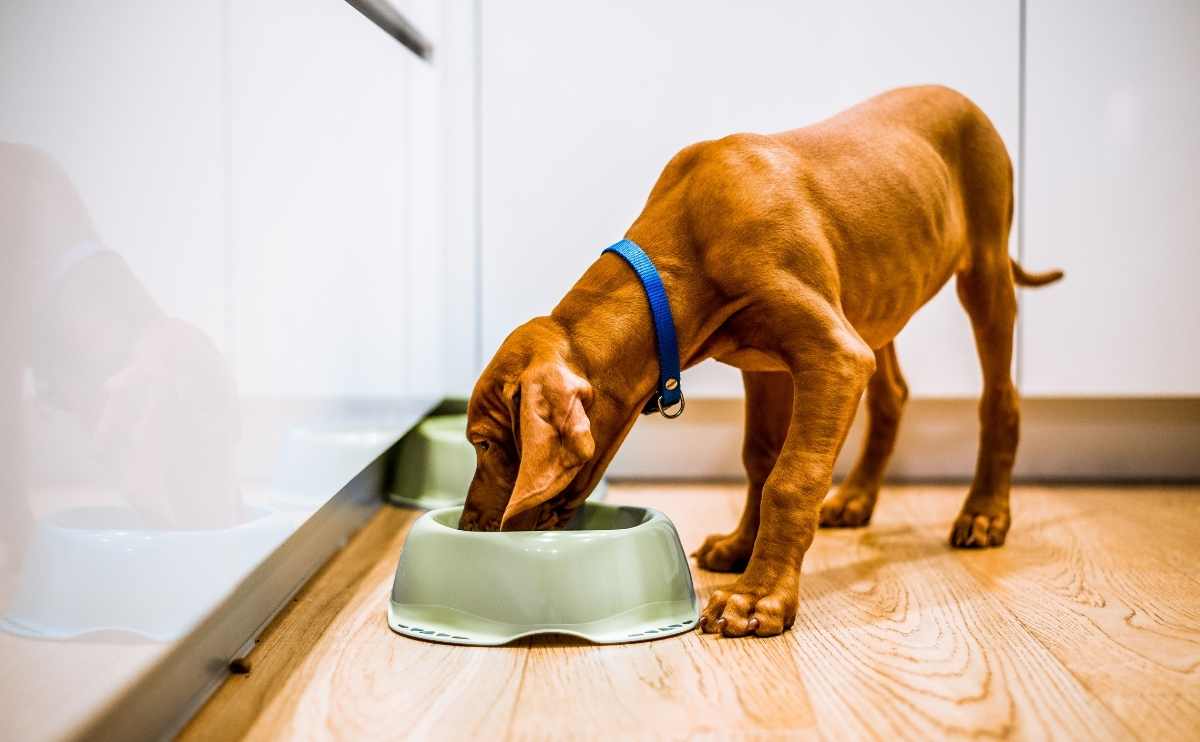
There are a variety of reasons why a canine could be underweight or have trouble gaining and maintaining weight. Weight loss can occur for many reasons, including disease, infection, low-quality food, dental disease, gastrointestinal dysfunction, and even serious illnesses like cancer. While most owners are concerned with their pups putting on too many pounds, having an underweight pup can be very scary and cause emotional distress both to the animal and the owner.
5 Common Reasons Dogs Are Underweight
- Younger canines are very active and can have difficulty maintaining a healthy weight due to their constant activity level. They burn a large number of calories during their day and require more to support their fast growth rate. If their diet does not support energy use, dogs may be unable to maintain enough pounds.
- Often, the cause of an underweight canine is a poor diet. This can be due to poor quality food, a calorie-deficient diet, or being a picky eater and refusing food. In some cases, owners may put their pets on a special diet when sick or not feeling well to encourage eating and then forget or resist switching them off that diet fully. I, for example, had a Chihuahua who got sick and ate chicken and rice while she was not feeling well. Once she was better, she did not want her regular food. This led to some gastrointestinal upset and even blood in her stool.
- Stress or anxiety can also cause a dog to be underweight. For example, a pet suffering from separation anxiety may refuse to eat. Other times, events like moving or a new pet may trigger the same response.
- Mouth pain can also cause canines to refuse to eat, leading to a loss of pounds. Canine dental disease can be very painful and quite serious. It is estimated that most canines have some form of dental disease by the time they reach three years old.
- The stage of life a canine is in can also impact their weight. If your pup is losing pounds as they age, their diet will need to be adjusted periodically to ensure they are getting enough fat, protein, and calories.
What To Feed A Dog To Gain Weight?
When selecting food to help a dog gain weight, it is important to consider the animal’s specific and unique medical needs. A higher fat, higher protein diet is helpful for canines that are mild to moderately underweight. However, this does not mean they should eat the highest fat-protein content possible. You still want your pup to be healthy.
Look for foods with about 18% fat and between 28% and 30% or more protein. Pups with trouble eating and need to gain weight may do better on wet or fresh meals. While they should incorporate healthy kibble into their diet, make sure to integrate wet food as a standalone meal or mixed in with dry kibble. Canned foods tend to be higher in fats. Human-grade meals, fresh or freeze-dried, also have high levels of healthy fat and protein.
Along with wholesome, natural animal proteins like beef, fish, turkey, chicken, lamb, bison, duck, and more, owners should also look for recipes that contain healthy fruits and vegetables. Some, like pumpkins, potatoes, and sweet potatoes, can be helpful in gaining healthy weight.
While some owners and veterinarians will recommend a grain-free diet for underweight canines, this is not a good idea. Food for weight gain should include carbohydrates, such as rice. Other wholesome grains like barley, oatmeal, quinoa, and more are also beneficial.
Best High-Fat Dog Foods
In some cases, dogs may need a food recipe with higher fat content to help them gain a few pounds or maintain a healthy weight. The options below are some of the top picks on the market today.
Best Overall: Raised Right Beef Review
Raised Right is a company that makes human-grade, fresh canine food. Recipes are gently cooked in human-grade USDA facilities. All recipes include natural animal proteins, including organ meat. Raised Right uses no high-carb fillers, corn, wheat, gluten, or soy. They also avoid dairy, making their meals very flavorsome and easy to digest. Recipes have only ten ingredients.
To gain bulk and fat, I like the beef recipe. According to dry matter analysis, the beef recipe contains 61% protein and 24% fat, along with 8% carbs. It is made from beef, beef hearts, carrots, beef liver, cranberries, organic spearmint, flaxseed oil, egg shell powder cod liver oil, and organic kelp. Raised Right makes other recipes, but beef has the highest fat and protein. I also like the puppy growth formula in beef flavor. Because it is grain-free, owners will want to add plain rice or oats to add some carbs and fiber.
Fussy eaters will enjoy the fresh flavors and benefit from the high-quality ingredients. Because it tastes great and has no fillers or artificial additives, raised Right is healthy, with plenty of good fat and protein. The beef formula has 409 kcal/cup. Owners can customize their subscription plans and order a starter pack to try things out without committing to a subscription.
Price
- Starting at $10.99 per bag
Full Raised Right Review
You can learn more about this brand and its different recipes in our complete Raised Right dog food review.
Best Fresh: Open Farm Gently Cooked Beef Review
Open Farm gently cooked is another top pick for higher-fat dog food. Meals are fresh and lightly cooked. Ingredients are carefully sourced and are of human-grade quality. Open Farm uses only ethically and sustainably sourced ingredients. These gently cooked, highly flavorful recipes have much to offer for dogs that need to put on a few pounds.
The grass-fed beef and brown rice recipe is a top pick for underweight dogs. The ingredients are slow-cooked using a sous vide method. They are 100% traceable and contain no corn, potatoes, or legumes.
Open Farm’s gently cooked beef with grains contains animal welfare-certified beef, brown rice, carrots, beef liver, kale, flaxseed, sunflower oil, salmon oil, coconut oil, chia seeds, and other vitamins and nutrients. The company also makes several other recipes, including dry kibble with freeze-dried bits. These are all suitable picks for underweight canines.
Price
- Starting at $89.99 for 8 lbs.
In-Depth Open Farm Review
Learn more about this fresh food brand and how the process works in our full Open Farm dog food review
Best Kibble: Instinct Original Grain-Free Recipe Real Salmon Freeze-Dried Raw Coated Review
View on Amazon | View on Chewy
Instinct Original makes high-quality, grain-free kibble that is high in protein and fat. The recipe is made with wild-caught salmon and is coated with freeze-dried meat. Instinct’s high-protein kibble promotes digestion, healthy skin and coat, healthy muscles, and immune system health. It contains live natural probiotics, natural Omega fatty acids, and antioxidants.
Instinct’s recipe starts with salmon, white fish meal, peas, menhaden fish meal, canola oil, herring meal, chickpeas, pea protein, carrots, apples, cranberries, as well as other vitamins and minerals, and freeze-dried cod. Kibble has 523 kcal/cup, 37.5% crude protein (min), 20% crude fat (min), and 3.5% max fiber.
Dogs get the satisfying crunch of kibble with the taste and benefit of real meat and raw nutrition. Kibble contains no grains, potatoes, wheat, corn, soy, byproduct meal, or artificial colors and preservatives. Other flavors are available, including duck, beef, rabbit, chicken, and salmon. Though each recipe has a varying degree of fat and protein, all use high-quality protein and healthy fat, making them a healthy and reliable selection for underweight pups.
Price
Best High Protein Food For Weight Gain: CRAVE High Protein Beef Review
View On Amazon | View on Chewy
Crave makes several high-protein formulas that are good for gaining bulk. Crave focuses on protein and uses no grains. Beef kibble has 34% crude protein and 17% crude fat, and vegetables provide healthy carbohydrates and fiber. The recipe uses no corn, chicken by-product meals, soy, or wheat. There are a few flavor choices other than beef, including lamb, chicken, and fish.
The beef kibble formula includes beef, chicken meal, split peas, lentils, pork meal, chicken fat, pea starch, fish meal, dried chicken, dried plain beet pulp, and added vitamins and minerals. Beef kibble packs 459 kcal/cup. The recipe is developed to support healthy digestion and whole-body wellness. Regardless of flavor, all Crave kibble starts with real protein. It is best for adults and is suitable for all breeds.
Price
Best Dog Food To Gain Weight And Muscle
In some cases, dogs may need to gain muscle. This can be the case for senior dogs to recover after an illness or injury and as a way to help them perform better at physical tasks like agility, hunting, or as a service dog.
Best Overall: Bully Max Muscle Gain Review
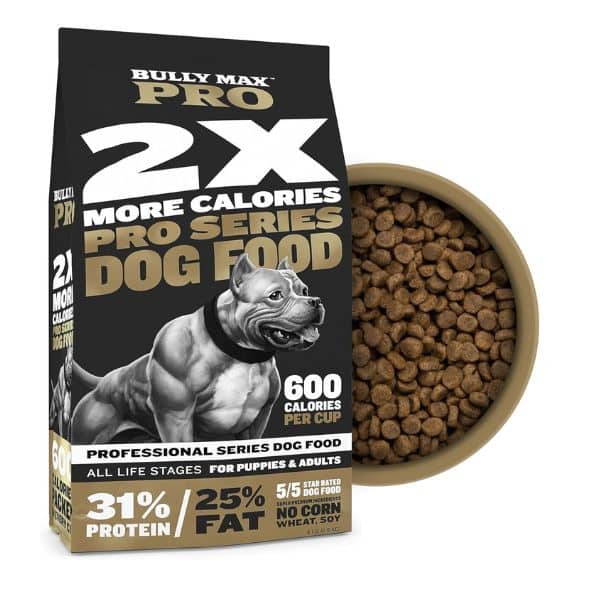
Bully Max is designed specifically to help canines gain fat and muscle. The formulas are meat-based, with 31% protein (min) and 25% fat (min). They feature 19 essential vitamins and minerals. Bully Max is very calorie-dense and contains 600 calories per cup. The higher calorie count means Bully Max is very good for underweight pups. Every bite they eat will pack a powerful punch of nutrients and energy. Because of the high color content, it is important to ensure dogs do not overeat, which can lead to too much weight gain too fast, which is also unhealthy.
Bully Max’s formula is developed to be easy to digest and provide maximum energy and support for dogs. Protein comes from chicken meal and chicken fat. The recipe also contains rice flour egg product, whitefish meal, dried beet pulp, tapioca starch, flaxseed, and organic dried kelp, with a vitamin and supplement blend. While these ingredients are not as fresh as some other offerings, the Bully Max formula is designed for canines to gain bulk. It is a great pick for dry kibble for underweight pups and can be combined with fresh or high-quality canned meals.
Bully Max makes several different high-calorie formulas. The kibble is safe for both puppies and adults and can be used at any life stage. They do make puppy-specific products, as well as choose supplements and wet food designed to help dogs gain pounds and increase muscle mass.
Price
For Athletes: Diamond Natural Extreme Athlete Review
Diamond Natural Extreme Athlete is made to support the needs of highly active dogs, so it has high levels of protein and fat. The dry kibble formula contains superfoods and probiotics that support development, digestion, and overall health support. The recipe contains cage-free chicken, as well as fruits and vegetables. The kibble also contains species-specific canine strain proprietary probiotics as well as antioxidants and prebiotics. It has no corn, wheat, soy, artificial flavors, or colors.
Diamond’s recipe starts with chicken meal, chicken, ground white rice, chicken fat, cracked pearled barley, egg product, ground miscanthus grass, dried beet pulp, and contains other healthy elements like flaxseed, dry chicory root, L carnitine, glucosamine, kale, chia seed, pumpkins, blueberries, oranges, canola, dried kelp, coconut, spinach, carrots, papaya, and more. Kibble is full of flavor, as well as packed with healthy protein and fat to support weight gain and maintenance. It is a good pick for budget-conscious owners who still want to give their dogs high-quality nutrition to support a healthy weight.
Price
- Starting at $35.74 for a 40 lb. bag.
Best Puppy Food For Weight Gain
Puppies grow rapidly and need food to sustain them and provide enough energy to keep up with them. These foods make a fantastic, healthy addition to your puppy’s bowl and can help them gain a little weight.
The Farmer’s Dog Beef Review
The Farmer’s Dog is a subscription pet food delivery company that makes fresh, human-grade meals prepared specifically for canines. I recommend The Farmer’s Dog for canines of all ages. However, it can be a very good pick for a puppy that is reluctant to eat or having trouble gaining weight. The ingredients are wholesome, all-natural, and human-grade. Recipes are simple, use limited ingredients, and are prepared freshly. They are then flash-frozen and shipped directly to your door. The high quality of the food, fresh flavor, and easy digestibility make The Farmer’s Dog a top pick for any pup that needs to gain weight.
All recipes are developed by board-certified American College of Veterinary Nutrition experts. Males are complete and balanced, meeting the Association of American Feed Control Officials (AAFCO) standards. Ingredients are all locally sourced. Dog owners can set up a customized subscription based specifically on their pet’s health. The dog profile considers 15 different health issues, creating a subscription for each specific pup. All recipes are grain-free, but owners can mix in some plain white or brown rice to add healthy grains and fiber.
For puppies, we recommend the beef recipe as it contains the highest protein. Other protein choices include chicken, turkey, and pork. The beef recipe contains USDA beef, sweet potato, lentils, carrots, USDA beef liver, kale, sunflower seeds, salmon oil, and the farmer’s dog nutrient blend. Beef contains 11% crude protein (min) and 8% crude fat (min). Calories will depend on how much your puppy eats.
Price
- Prices vary based on your pup’s age, weight, and specific subscription choices. Smaller dogs start at $2.00 a day.
Detailed The Farmer’s Dog Review
Learn more about this brand through our personal experience in our full The Farmer’s Dog food review.
How Can I Tell If My Dog Is Underweight?
Depending on breed and body type, it can sometimes be tricky to tell if a dog is underweight. For healthy canines, you should be able to see their waist behind their ribs. However, if outlines of individual ribs and bones are clearly visible, a pup is likely underweight. A healthy weight on a dog can be very hard to discern for some owners, so a good tip is to look at other areas of the body and see if their bones seem to be poking out or are highly visible in other places. Is the spine visible when you look at your pup from above? Does the base of the tail stick out or seem more prominent?
A dog may be underweight if owners can see ribs, pelvic bones, prominent bones, or lumbar vertebrae poking out from the body out of visible distance. These dogs have a loss of muscle mass and no noticeable body fat. When you pet the animal, if there is no fat felt covering the ribs or bones, that means they are underweight.
If you think your dog might be underweight, the best thing to do is to take them to the vet for an examination and a body condition score. A body condition score is an assessment a veterinarian or nutritionist can do on your pup to determine how much fat is carried on the body. The body condition score will involve checking different areas of the dog’s body to ensure they are neither over nor underweight.
Body Condition Score: 1 – 9 & What It Means
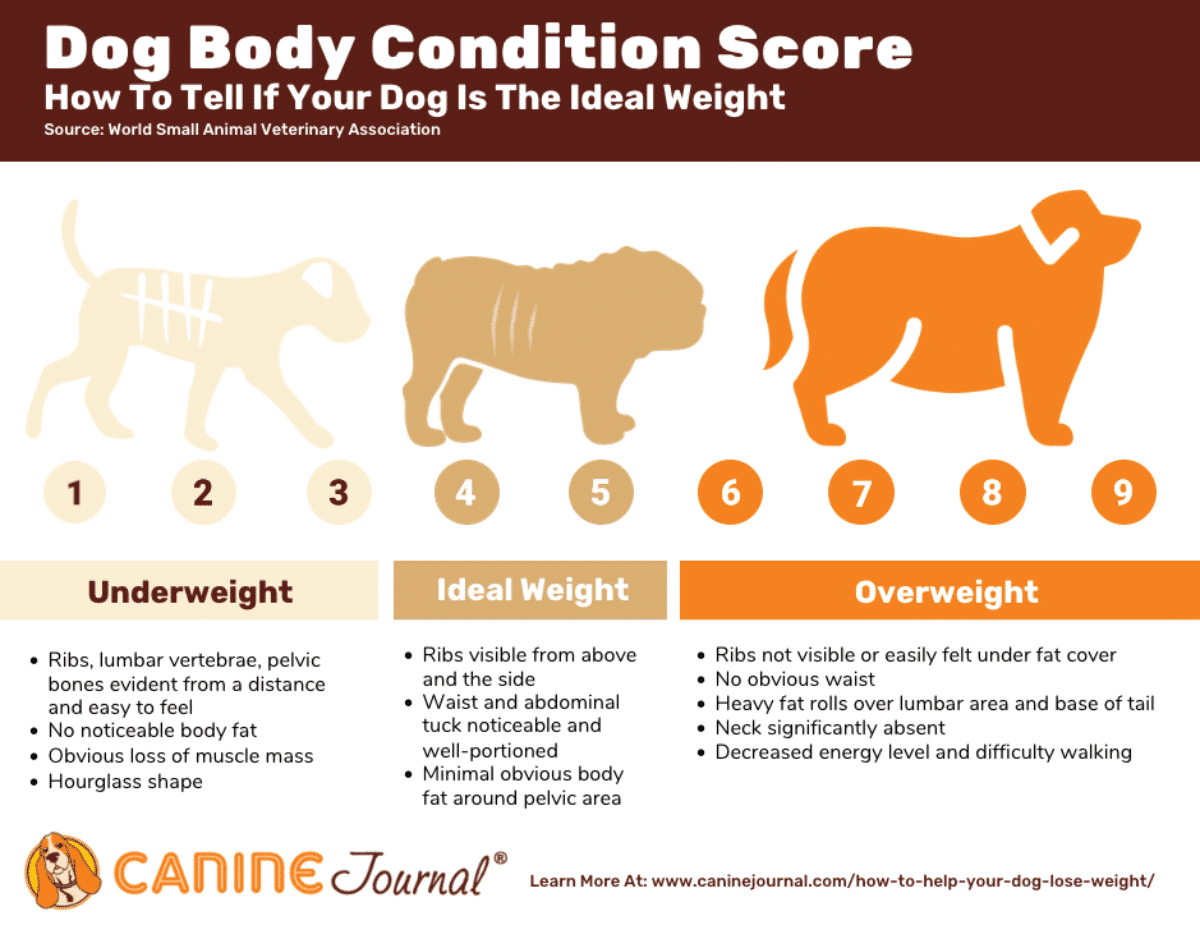
- 1 means a canine is extremely underweight, and nine means very overweight.
- Canines that are at the lower end of the scale, around 1 and 2, will be very thin and noticeably underweight.
- A score of 3 to 4 means a dog is thin and somewhat underweight.
- 5 is an ideal weight,
- 6 and 7 are slightly overweight and markedly overweight.
- 8 and 9 are obese and clinically obese.
If your dog is determined to be underweight, it is best to consult with a veterinary nutritionist to ensure you feed your dog a healthy balance of food that will support overall health, energy, growth, development, and healthy weight.
7 Ways To Help Dogs Gain Weight
If you are concerned about your dog being underweight, the first step is to speak with your vet. They can perform an exam and some tests to rule out any underlying medical condition.
Along with taking your dog to the vet to rule out any underlying medical conditions, determine dietary needs, and ensure they are getting a well-balanced, healthy diet, a few other things can encourage dogs to gain weight.
1. More Frequent Meals
In some cases, eating more frequent, smaller meals may be beneficial for weight gain. This is especially true for dogs who are not interested in eating large meals, are larger breeds, are older, or are puppies. Owners can also leave food bowls out for longer to allow dogs to take a bite or two as they pass by.
2. Calm And Warm Environment
Keeping your pup’s environment calm, comfortable, and warm is very important. Canines who are underweight do not have enough body fat to keep themselves warm enough. Temperatures in the home should be kept a little warmer. Dogs should have plenty of warm spots to curl up in and get comfortable.
3. Proper Veterinary Care
Keeping up with regular and preventative veterinary care is key to keeping your dog healthy. This is especially true for any dogs suffering from poor nutrition or who are underweight. It is important to ensure that there are no underlying diseases or conditions affecting their appetite, interest in eating, and ability to digest and use nutrients. Once these conditions are ruled out, it is important to stay in touch regularly and have checkups to ensure weight management and gain are done healthily.
4. Better Food
Switching to better quality nutrition made from fresh, all-natural ingredients will help encourage dogs to eat. Higher-calorie food may be helpful. Additionally, in some cases, offering a mixture of wet and canned as well as dry kibble can be beneficial. For dogs who are picky eaters, adding wet or bone broth toppers or gravy and mixing fresh, human-grade meals with kibble may increase the interest a pup has in the aroma and flavor.
Fresh, human-grade nutrition is very good for dogs who need to gain weight. In part, the benefits are due to the high amount of natural flavor and palatability these foods contain. We have covered a couple of companies here, but several other high-quality options exist. These include Spot & Tango, which makes both fresh dehydrated meal options, as well as Ollie and Nom Nom. JustFoodForDogs makes a human-grade shelf-stable line that is very high quality. Depending on your pup’s specific needs, unique tastes, and budget, there are plenty of options out there that include raw, human-grade, and freeze-dried elements in their food, all of which taste great and can encourage dogs who are underweight to eat.
5. A Healthy Breakfast
Dogs that are having trouble eating, malnourished, or underweight can benefit from eating a healthy breakfast. Breakfast is a very important meal, as it sets the tone for the day. For dogs who are underweight, breakfast should be full of healthy protein, flavor, and fat. Some owners may want to give canned food first thing in the morning to encourage eating. Mix in some high-calorie kibble for that extra boost of nutrition and energy.
6. Exercise
Dogs who are underweight and on a special diet to gain pounds must get enough physical exercise. Simply taking on extra calories and lying around is not going to constitute healthy weight gain. It does not mean that dogs need to play high-impact sports or run marathons with their owners. Regular daily walks and gentle playtime are the perfect amount. You want to be careful not to overexert your dog’s body, especially when they are underweight, as it can put them at risk of overexertion and injury. As your dog starts to eat more and increase weight, you can increase the exercise.
7. Track Food Intake And Gradually Increase
Anytime you are dealing with a dog experiencing weight issues, whether overweight or underweight, it is advisable to keep track of how much they are eating. For underweight dogs, this is an especially important task. Monitor how much your dog eats every day. Slowly and gradually increase the amount they eat until they eat a normally expected amount for their size and age.
What About Supplements?
If your dog is suffering from a medical condition or pain or, in this case, is underweight, it is normal to think that perhaps supplements might be helpful. There are plenty of supplements to choose from, including allergy, bone health, vitamins, and more. However, for dogs who are underweight, it is always best to discuss the use of any supplements with your veterinarian first. The same also goes for dogs who are on medication. Because dogs who are underweight are often older or have extenuating medical concerns, owners must work closely with their veterinarians when adding or taking anything away from their diet.
Our Methodology
We analyze hundreds of dog food brands and individual formulas to provide our recommendations for the best nutrition. Each of the following elements helps us determine the best dog food for any dietary need. Our in-depth research includes:
- Scrutinizing all ingredients included in every formula
- Having firsthand experience with our dogs for many of the foods we recommend
- Assessing the guaranteed analysis for every formula, including protein, fat, fiber, and caloric content
- Investigating the latest scientific studies on dogs’ nutritional needs and benefits of ingredients
- Researching the specific dietary needs for breed sizes and health conditions
- Reading hundreds of customer reviews
- Staying informed on every dog food recall
- Diving into every pet food brand’s history and reputation
- Keeping on top of pet food trends
Unlike many other review sites, we give unbiased reviews based on countless hours of research. Our goal is to provide our readers with the healthiest options for their pups.
Why Trust Canine Journal?
Danielle is a lifelong dog owner and researcher dedicated to improving the lives of pets everywhere. She has reviewed over 100 pet food brands, testing many with her two rescue pups, Daisy and Falkor. She spends countless hours researching the latest pet care, health, food, and training developments to help owners learn what’s behind the label. Danielle works with a professional and experienced team to bring our readers the best, most accurate, and up-to-date information to better the lives of pets and people.
